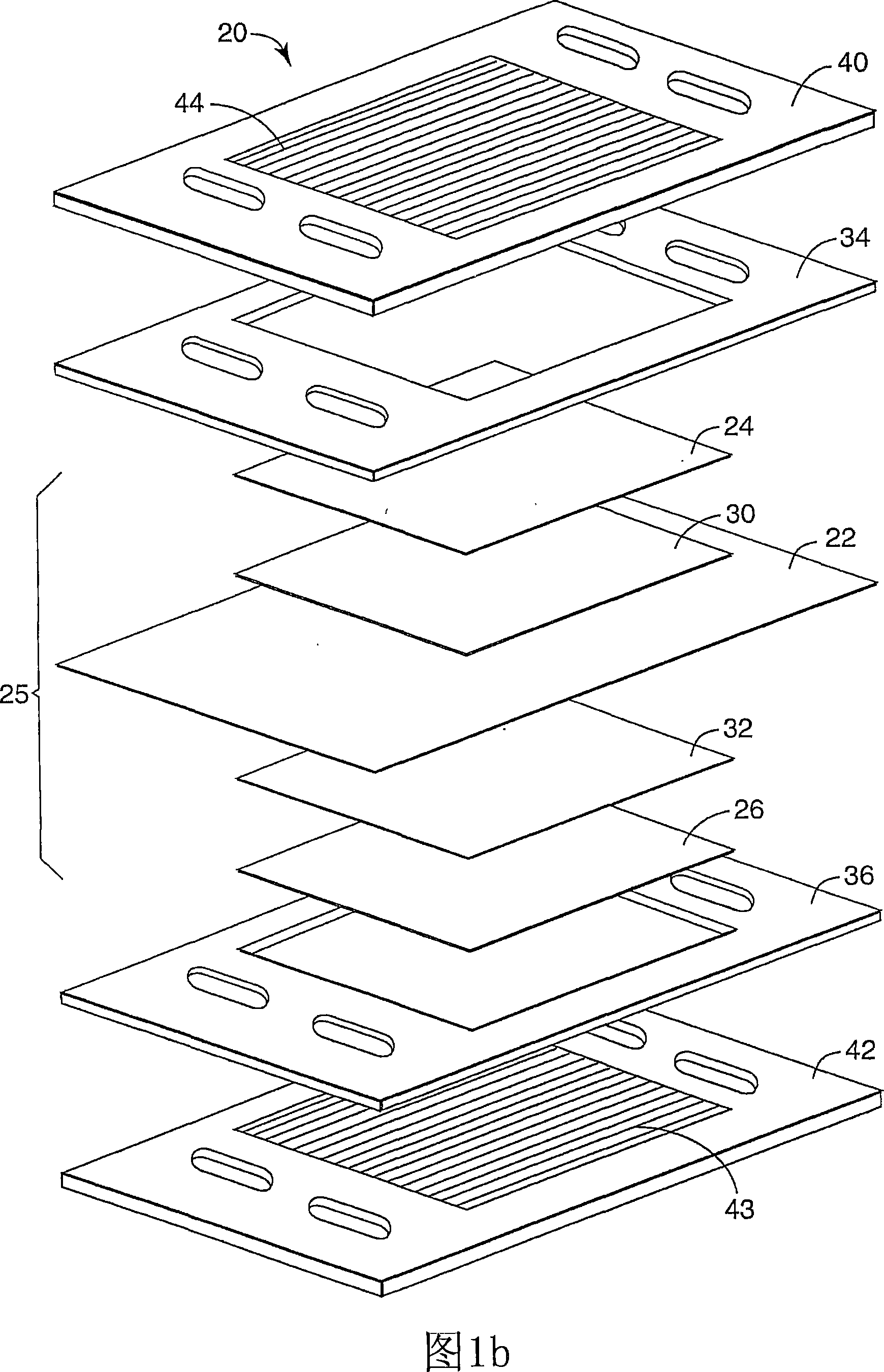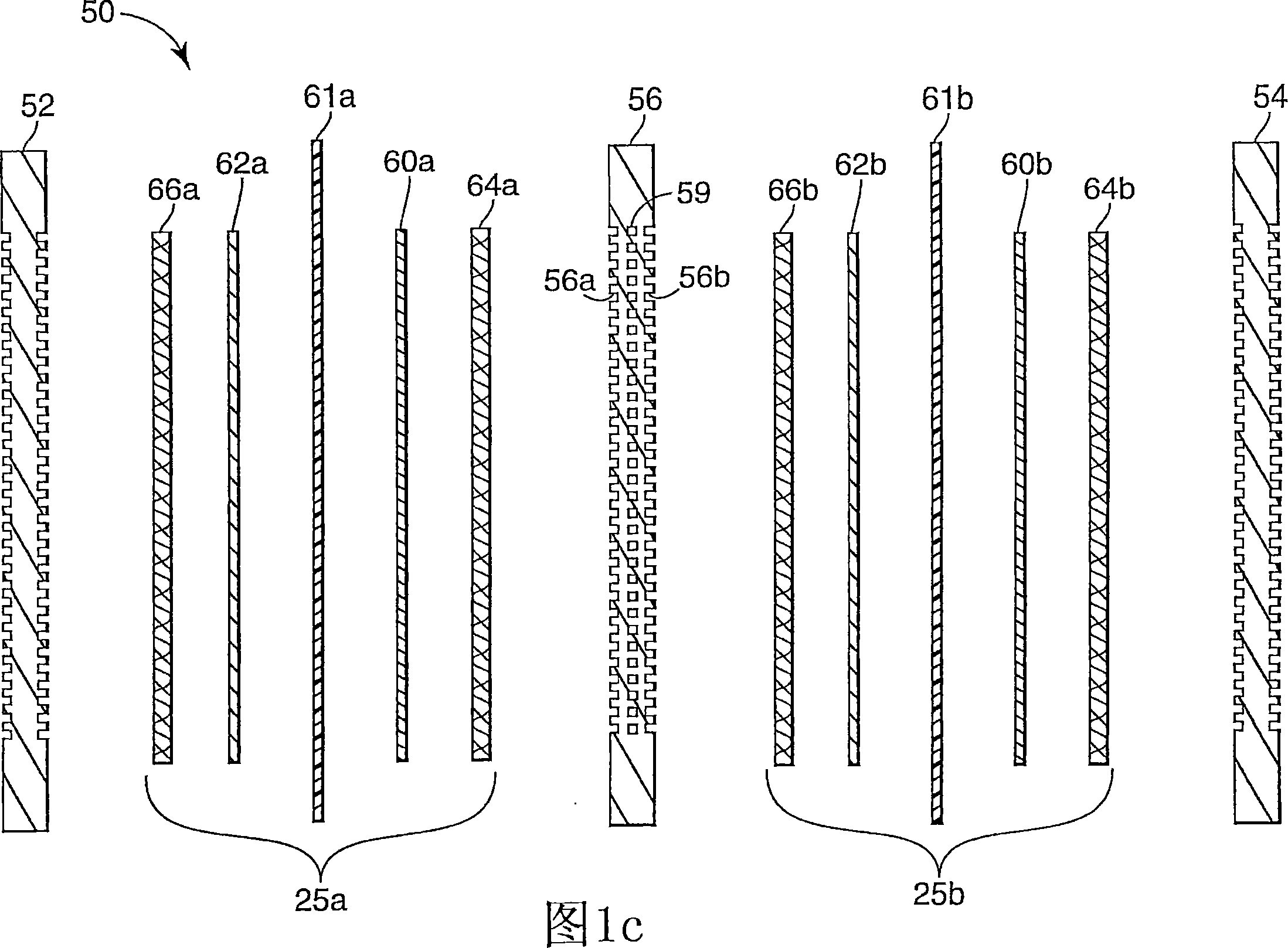Passive dual-phase cooling for fuel cell assemblies
A fuel cell stack and component technology, which is applied to fuel cell components, fuel cells, fuel cell additives, etc., can solve the problems of increasing the size of the primary heat exchanger, increasing the weight and cost, and reducing the available energy.
- Summary
- Abstract
- Description
- Claims
- Application Information
AI Technical Summary
Problems solved by technology
Method used
Image
Examples
example
[0080] The apparatus shown generally in block diagram form in Figure 2a is used to study parameters within a general flow field coolant plate. Fabrication includes a 7" x 20", 1 / 16" thick aluminum heating plate to accommodate five flat, adhesive-backed KAPTON heaters (Micro Model 5466, 3" x 4", nominal resistance 4.1 ohms , Micro Inc., Minneapolis MN), the aluminum heating plate has a 4 inch x 15 inch, 1 / 32 deep recess. The rest of the recess is filled with plasticine (plasticiene clay). The back of the heating plate fits the same A Plexiglas plate of 0.75" size. A thin layer of thermal interface grease (Wakefield Thermal Compound 120-2<Wakefield Engineering, Inc. Wakefield, MA) fitted the front surface of the plate to another 1 / 16" aluminum channel plate. later. The rear of the plate has 1 / 32" deep slots into which 0.01" diameter T-type thermocouples are placed, terminating at the horizontal centerline and the vertical corresponding to the bottom, center, and top of the acti...
PUM
| Property | Measurement | Unit |
|---|---|---|
| depth | aaaaa | aaaaa |
| depth | aaaaa | aaaaa |
| depth | aaaaa | aaaaa |
Abstract
Description
Claims
Application Information
 Login to View More
Login to View More - R&D
- Intellectual Property
- Life Sciences
- Materials
- Tech Scout
- Unparalleled Data Quality
- Higher Quality Content
- 60% Fewer Hallucinations
Browse by: Latest US Patents, China's latest patents, Technical Efficacy Thesaurus, Application Domain, Technology Topic, Popular Technical Reports.
© 2025 PatSnap. All rights reserved.Legal|Privacy policy|Modern Slavery Act Transparency Statement|Sitemap|About US| Contact US: help@patsnap.com



